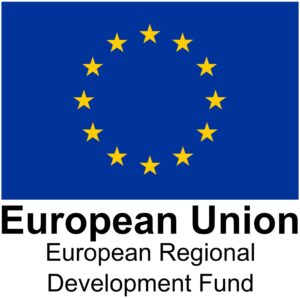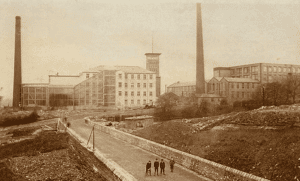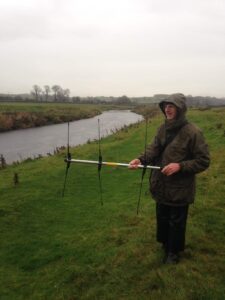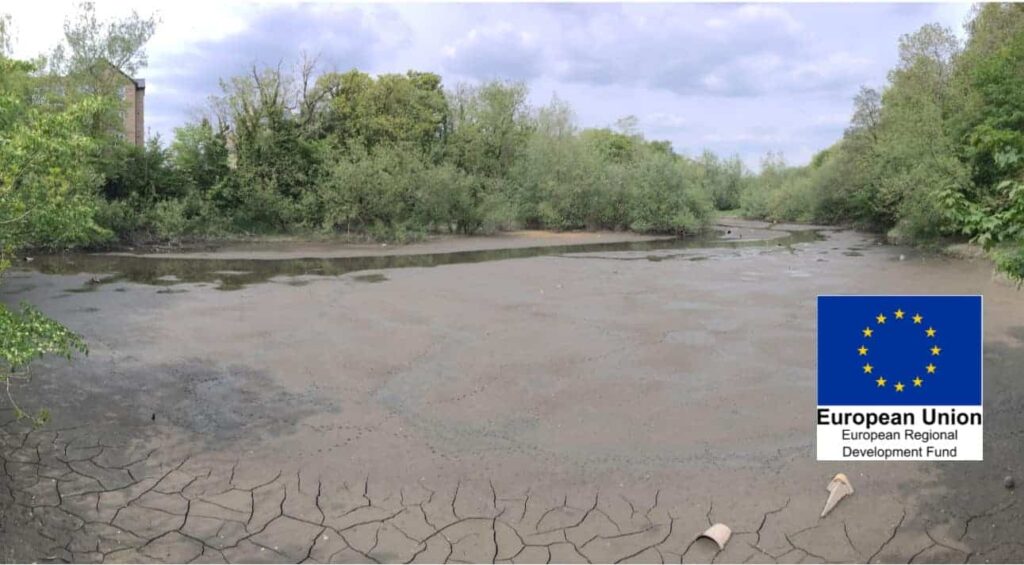Primrose Lodge Blue and Greenway Project (PLBGP) is an ambitious project to convert the former Primrose Mill Lodge into a pubic open space within the heart of Clitheroe.
The project is receiving £500,768 from the Ministry for 
The project will achieve its aims by improving the habitats, providing public access, and connecting the river habitat, and as a result the site will boast a diversity of wildlife for people to explore and enjoy. This project is hoped to be one of several to convert the whole of this site into much valued green and blue space for people and wildlife, unique in its placement with an urban surrounding.

Why is this work necessary?
In 1787 a 7 metre high dam was constructed to provide a consistent source of water that could be utilised to power a cotton mill, and laterally a print works, paper works, and lifting equipment manufacturer at Primrose Works. The Lodge is now redundant owing to significant re-development of Primrose Works negating the need for water supply. The construction of the Lodge prevented upstream migration of a number of aquatic species, but also created an interruption to and artificial sediment regime downstream.

The Lodge was never decommissioned as part of the wider redevelopment, so the negative impact on the aquatic ecology continues, and is negatively impacting downstream as well as upstream. However the unique nature of the site, and lack of human intervention has resulted in the site being given a local conservation designation (Biological Heritage Site). The designation is based on the fact that the industrial activity and artificial nature of the site make a contribution to biodiversity in their own right, as well as supporting flowering ferns and plants that are classed as vulnerable in the “Provisional Lancashire Red Data Lost of Vascular Plants”. The key features already present will be retained and enhanced, whilst new features are also created.
What will the work entail?
The project principally consists of three stages:
-
- A fish passage project
- The de-silting of the redundant mill lodge and planting of marginal and emergent wetland plants, as well as clearance of litter and fly tipping
- Creation of a footpath, bridge, viewing area, and signage.
You can see a plan of the different pieces of work involved in these stages here
What will the outcome of the work achieve?
The fish pass will connect of 9 hectares of Mearley Brook and lead to salmon, sea trout, and eels being present not only in the heart of Clitheroe, but beyond to Worston and into the streams on the side of Pendle Hill. They will in turn support other wildlife such as kingfishers, herons and otters.
The de-silting will create a permanent open water habitat, which will be home to wildfowl and invertebrates that will support bats and other species, as well as a significant improvement of the aesthetic value of the site.
The footpath will connect Primrose Road, and the lower end of Woone Lane to Whalley Road, and enable children to walk to school through a woodland walk and nature park. The viewing area will allow people a much better view across the site, for people to enjoy.
How will we determine the projects success?
We will use a range of measures to determine the project’s success. These will link to the different aspects of the project.
For the fish pass we will monitor how fish use the fish pass using “PIT tags” (Passive Integrate Transponder Tags), and radio tags, to see how, where and when they migrate, and importantly if they migrate successfully through the fish pass. We will then monitor the fish populations upstream, and other locations, to compare changes in fish populations to determine if there has been a positive response.

For the de-silting, we will monitor the water quality coming into and out of the Lodge, but also the water levels and plants, birds and mammals that use the Lodge. This will be done using “sondes” automated sampling devices that will assess the water quality, and compare how clean it is coming in and going out. For the plants, birds and mammals, we hope to work with volunteers and run training courses in species identification to gather records on species present after the works are completed, and compare this with the surveys done prior to the works.
The footpaths and viewing areas, we will hold events and undertake surveys to determine how well used the footpath is used, and what people think about the site, and works carried out. We also hope to use these surveys to identify future work
Who will look after the site post works?
Very excitingly a new Trust – Primrose Community Nature Trust (PCNT) – has been established to own, manage and maintain the site into the future and ensure that it continues and increases its value as a public nature park. For more information on PCNT please visit their website:


